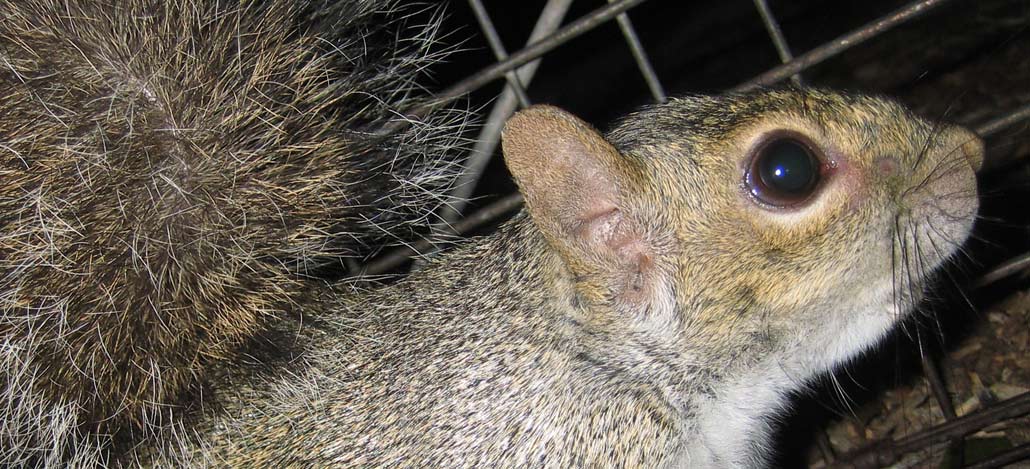- USA Wildlife Removal Education Guide - Lights and Sounds and Squirrels
Lights and Sounds and Squirrels

The search for a remedy usually turns ups two main solutions: high frequency sound generating devices and high-intensity light systems, such as pulsating strobes. Both are designed to make life unpleasant for the squirrels, inducing them to move out.
The high frequency sound devices operate by emanating high-pitched noise that is within a squirrels’ range of hearing – about 25,000 hertz (cycles per second) but too high for human ears. On some of the devices, the frequency can shift so that if the animals get used to one, they’ll soon have to contend with another. The theory is that the squirrels ultimately will be so annoyed that they will leave. The reality is that squirrels are both persistent and adaptable, and once they get used to the situation they often choose simply to live with it.
One down-side is that the sound solution would also fall within the hearing range of domestic pets, so if you have cats and/or dogs, you’ll likely bother them as much as you do the squirrels. Another is the fact that the sound waves are weak, short-range signals that are easily blocked by physical walls, corners and furniture. And finally, it’s been shown that at best, it results in a decrease rather than an elimination of the pest presence.
The animals similarly become inured to light deterrent systems. Some suggestions call for attic lights to be left on; others, for high intensity lighting or strobe lights that flash about 90 timer per second to be deployed so as to establish a level of discomfort for the animals. Again, they may simply shift their location to avoid the problem.
Or, they may move out. Once they do so, you can identify their mode of entry/egress and close it off. If you don’t do so, you can bet that they’ll be back. The usual caution applies: most often the unwelcome resident will be a nesting squirrel that chooses your property as a place to bear and rear her litters.
If you close the mom out and the babies in, you’re creating a problem not only for the squirrels but potentially for yourself as well. You’ll know it when you smell it.
If you need help, we service the entire USA! Click here for a wildlife removal specialist in your town!
Go back to the main Squirrel Removal page for more information about Lights and Sounds and Squirrels.

